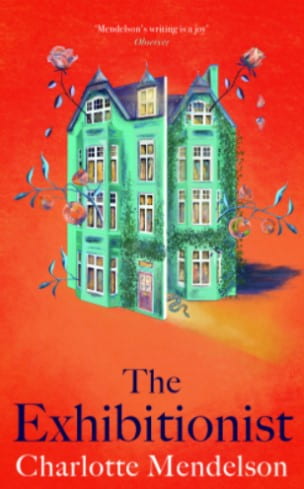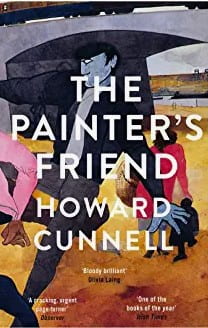If you had asked me if I had read many books about art I would have said not but here we are, the first ‘5 books about’ . . . art and artists. It just seems to have turned out that way rather than me consciously picking up books that are based on it.

The first is The Exhibitionist by Charlotte Mendelson – a very unflattering portrait of an artist, Ray, who is past his best and takes it out on everyone including his wife who is just coming into her stride with her sculptures. Everything is about Ray ands what Ray likes and doesn’t like and when he doesn’t like it he shouts obscenities and is cuttingly rude. He puts on an exhibition which has practially nothing in it and what is there is appalling, embarrasing even although Ray puts the lack of critical acclaim down to his family trying to sabotage him. Only one member of his family has managed to escape and live and work elsewhere and his wife has been invited to represent the UK at the Venice Biennale and she knows this will upset him so the dilemma is whether to go or not.
In Portrait of a Thief by Grace D. Li a group of Chinese-American students decide to steal important works of Chinese art from museums around the world and give them back to China, starting the debate in the book about who owns what. The students are wealthy and have many skills necessary for the work they do but during the last heist discover that there is another group undertaking the same work as they are for the same works of art. If you are looking for an entertaining read about a heist, beauty and what it means to be a child of an immigrant then this is the book for you. I can see that this book would make an excellent film.

In The Painter’s Friend by Howard Cunnell, Terry Godden is an artist down on his luck. He finds a boat to live on in a community of people also struggling to get by and settles in. However, developers want the land, it’s a small island in the river, and this means the community will be evicted. Art becomes activism in this book along with the struggle for artists who do not know the ‘right’ people to get their work exhibited to support the community’s right to stay. Cunnell is a poet and there were many descriptions in the book about sunrise and set, the landscape and people that were poetic. It is also a story of the wonderful relationship between people and their dogs.
Winter rain still filled the muddy hollows between the trees, and the churned-up ground, the reflective surface water, was a darkly shining honeycomb, its solidity uncertain every time I put my foot down. The trees were blue columns. The river was silver movement between the trees.
p126
Gentrification always ends up pushing out those who were there first, the tension between community and money.
How art and beauty shape us is an ongoing discussion with Still Life by Sarah Winman joining in. The title of the book can be read in two ways: still life as in the arrangement of objects to be drawn or painted, or the fact that we are still living life. Both are equally appropriate for the book. The story is set in post-war Europe where friends travel to live in Italy asking us to consider what family means. Is it just those that have a blood or legal link or is it more?
Spanning nearly forty years there is bickering, music, food, lots of dialogue and magical realism, but every character is spurred on by art of various kinds be it dance, painting or drawing and love.
Ulysses Temper finds himself in the cellar of an Italian house as bombs fall all around him in 1944. There, he meets Evelyn Skinner a middle-aged art historian who has come to save paintings from destruction and raids. When Ulysses returns to London after the war, he receives an inheritance and decides to buy a villa in Italy and to take with him some of his friends with him. It is a warm look at their life, well-written and perfect for reading in the sun.

Finally, there is Black Butterflies by Priscilla Morris on the shortlist for the 2023 Women’s Prize for Fiction. The book is set in Sarajevo during the war and told with Zora an artist as the main protaganist. She stays whilst her husband and daughter leave the country earlier in the hope that she will join them when she has sorted out a few things. Of course, that doesn’t happen and she is trapped in the city slowly sinking into starvation and death. What is of interest is that destroying cultural objects now seems to be a part of war – think of all the buildings and architecture destroyed in Syria, but here in Sarajevo the building that holds the city’s archives, library, cultural centre and Zora’s studio is targeted and destroyed. The black butterflies in the title are all the little bits of paper blowing around in the wind after the centre has been bombed – all the works of art, books and documents gone. The impact of war on Zora is that she doesn’t paint again – certainly not the bridges that she used to paint and became famous for.
If you are interested in non-fiction, there is also Spring Cannot be Cancelled by Hockney and Gayford and The Story of Art without Men by Katy Hessel.